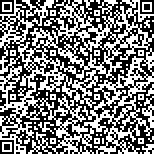下载中心
优秀审稿专家
优秀论文
相关链接
摘要

针对复杂场景中的遥感影像道路提取问题,论文提出了一种多特征约束的影像道路提取方法,并开展了论文方法可行性论证。该方法首先,根据道路宽度的先验知识以及道路的几何特征,提出一种改进的线段二次提取模型,利用线段长度和道路宽度确定候选道路种子点集;其次,输入道路结构信息,基于道路辐射特征对候选道路种子点进行整体匹配评价;再次,当候选道路种子无法符合辐射特征要求时,提出一种浅色机动车检测模型,以此将浅色机动车结果作为道路上下文特征,利用道路上下文特征对候选道路种子点进行分析;然后,构建道路拓扑分析模型,依据道路拓扑特征对候选道路种子点进行最终验证;最后,对提取道路种子点进行优化处理,并提出道路跟踪及拟合方法。通过不同复杂场景、不同分辨率高分辨率遥感影像下开展的不同方法实验结果对比分析表明,相对于其他商用软件ECognition和Erdas的方法,本方法自动化程度更高,运行效率高,适用于解决道路类型多样化、几何光谱噪声大的复杂场景道路提取问题。
Based on the characteristics of road images, a road extraction method for high-resolution optical remote sensing images with multiple feature constraints is proposed in this paper. First, the road image features are analyzed. Second, the feasibility of extracting road images with different feature constraints is determined to emphasize the necessity of building a road feature detection model. This study provides specific methods and steps. First, an improved line segment secondary extraction model is presented based on road geometric characteristics. The model is composed of the aggregation constraint and line segment dynamic fitting. Meanwhile, a candidate road seed set is constructed based on the geometric relationship between the extracted maximum length of 100 lines and known road width. Second, road structure information is inputted. The road radiation characteristics of the candidate road seed set are determined through an entire evaluation, which is based on improved template matching in road value formula, and the overall matching step concrete is identified. Third, when the candidate road seed set cannot meet the requirements of radiation characteristics, road context features are used to evaluate the seeds. Therefore, a light vehicle detection model that includes vehicle image geometric parameter analysis, morphological processing, edge detection, vehicle closed radiation information analysis, and other steps is established. The detection result of light vehicles will be used as the one of the road's context features. Fourth, the candidate seed points are verified according to the road topological feature. In this process, the road topological analysis model is constructed. The model uses the matching-tracking model and the contextual features to verify the road inspection points. The study proposes an improvement in the matching-tracking model and matching measure. Fifth, in road post-processing, the seed points of the extraction road are optimized, the false road seed points and the low precision road seed points are eliminated, and the road line fitting optimization method is proposed.
This work starts by experimenting the secondary extraction method of the high-resolution remote sensing line segment. Results show that the secondary extraction line segment is relatively complete and that defining the geometric features of the road is easy. Then, an experiment of light vehicle extraction is performed by using the remotely sensed image to verify the feasibility of the proposed method. Furthermore, the results can be used to reflect motor vehicle road context characteristics. Different experiments are performed in different scenes and resolutions of high-resolution remote sensing images. In comparison with the mature software ERDAS and ECognition, the experimental results show that this method is relatively automated, efficient, and considerably suitable in performing road extraction in complex scenes with diversified road types and geometrical spectral noise.

